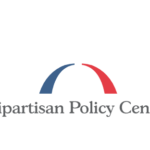The medtech industry continuously strives to deliver innovations that can enhance patient outcomes and improve their quality of life. But what happens if someone can’t access a medical device or diagnostic that can help them? Nearly 80% of U.S. counties are classified as healthcare deserts where obtaining proper care is challenging.1 To address this, the FDA, Center for Devices and Radiological Health (CDRH), and medtech companies are prioritizing health equity to provide a fair chance to all patients to achieve the best care possible.
Without access to essential medical devices, patients may experience a decline in their quality of life, prolonged illness, or even preventable deaths. A lack of access can also worsen health disparities, particularly in underserved or remote communities labeled as healthcare deserts. As an industry, medtech is looking for ways to ensure health equity for everyone so each patient can achieve their highest level of health regardless of where they live, their race or ethnicity, gender, disability, or socioeconomic status.
The path to getting there isn’t linear and can differ for each organization. Yet one thing is clear: driving health equity and improving patient lives is a priority. Forward-thinking companies are moving beyond traditional ways of working, enabling more connectivity and speed across the product value chain to better serve all patients.
Navigating changing healthcare delivery approaches and patient expectations
The way patients receive care has changed tremendously over the last 20 years, shifting from onsite to a hybrid model that includes virtual visits and remote data capture. Healthcare providers now have vast amounts of data to analyze before deciding the best care approach, and patients are more informed with expectations for their treatment options.
With technology at their fingertips, patients are empowered, engaged, and better understand paths for addressing diseases. A recent survey found that 85% of engaged patients report moderate or significant improvement in their health experience, and 76% feel more informed about their health.2 Engaged patients are good for the industry, but are HCPs and companies keeping up?
Doctors are taking strides to ensure a more modern and practical healthcare experience since the adoption of digital tools, like devices that allow for virtual visits and remote monitoring, among physicians has grown significantly. A study by the AMA found that doctors are using an average of 3.8 tools, an increase over the 2.2 tools reported in 2016.3 The same research shows that nearly 9 in 10 physicians believe that digital tools are an advantage for patient care, potentially streamlining some of the administrative burden required in the past.
“Patient expectations are shifting—they seek more accessible care and are increasingly empowered to take an active role in their health,” said Dr. Joanna Mitri, MD, MS, chief medical officer at Sequel Med Tech. “As an industry, we need to provide the tools that support delivering a positive patient experience.”
The medtech industry is evolving to meet the needs of its stakeholders by advancing its processes and embracing connected technologies that provide transparency. This allows organizations to share information and data with doctors and patients that can deliver insights and drive health equity.
“Patients are now more vocal and know more about what their outcome should be,” says Paul Swift, head of regulatory and clinical affairs, Americas, at ZEISS Medical Technology. “We have applications that help doctors view insights to better understand the impact on the patient and what they are experiencing.”
Prioritizing data transparency across teams and stakeholders
Having accurate, reliable data to make product decisions is critical to driving speed and compliance when developing a new product or device. Obtaining regulatory approval or clearance for medical devices requires comprehensive and accurate data demonstrating the device’s safety, effectiveness, and compliance with regulatory standards.
“If we don’t have the clinical data and aren’t meeting compliance needs, the product isn’t coming to market. Period,” adds Swift. “Our ecosystem is designed so that we can offer devices and solutions that help capture the data doctors and patients need to make the best care decisions possible. We can help doctors seamlessly share information with patients through digital applications so they can receive optimum care and personalized disease management education.”
Data plays a more significant role in health equity. However, suppose companies can better manage data, collaborate with sites more efficiently, provide better and easier access to information, and view data about patients using their products in real time. This would allow for faster adjusting of strategy, avoiding delays or recalls, and it can help catch or prevent serious adverse events (SAEs) sooner.
“We need all the data to help our teams take preventative action,” said Shrikant Ramachandran, vice president and CIO at Boston Scientific. “Knowing everything, from the number of physicians a patient saw to what procedures were done, is important. Data sharing should be continuous across the patient care value chain.”
Ramachandran is committed to making data as accessible as possible. Yet, companies must consider regulatory requirements. Establishing clear governance ensures the data meets standards and compliance requirements. A proper governance strategy can help drive reliable data from a device or a clinical system.
“With the data explosion we’re experiencing as an industry, the data captured across our products is cleaned and synthesized before it is usable,” says Ramachandran. “The standardized data can provide valuable insights to the patient and physician.”
Having foundational systems, like enterprise resource planning (ERP) integrated with clinical, regulatory, and quality systems, can allow seamless data flow across the product lifecycle.
Dr. Mitri says getting teams across functions on the same page right at the start of implementing change is critical. “Aligning all stakeholders early in the process — whether from quality or regulatory, patients, or healthcare providers – is key. Involving payers can help address market access challenges. Engaging these groups early can save time and prevent unresolved questions from arising later in the process.”
Collaborating to deliver more innovation and value to patients
Innovation can’t happen in a vacuum. It requires a forward-looking vision that extends beyond a specific function and enables collaboration across teams. To establish a foundation that drives innovation, medtech organizations should align people and processes and enable them with connected technology, making it easy to work cross-functionally and share information. This approach can help bring together product development, IT, and sales to all move toward one goal: faster and more efficiently serving patients.
The traditional medtech model was that each team primarily stayed within its functions. Now companies are working more towards breaking down silos. “To get more effectiveness across the process, try to drive higher levels of collaboration across all areas to deliver more value to the patient and the organization. We can’t do things in silos anymore,” says Ramachandran.
It can be challenging to shift toward this approach. However, medtech teams should start small with an agile methodology that allows for building upon successes. Mitri says establishing standards can make it easier to drive a transformation since data is formatted in the most useful way.
Across the industry, everyone is collecting data. The data itself is vast and complicated and can vary from pre-clinical to clinical, biocompatibility, performance, software, post-market, competitive, and so much more. Finding ways to collaborate with regulatory agencies to bring all this data together can help the industry remain in sync, adds Swift.
“We are close to seeing the true definition of patient-centricity,” adds Ramachandran. “A value chain that connects all the systems needed to provide a seamless patient experience. It’s not far away, and we already have a lot of tech working together to make this a reality.”
With connected systems, data can flow seamlessly from the device to a system and then to an app for doctors and patients. This can make a difference in empowering stakeholders and driving the best possible outcomes for people in need, everywhere, exactly when they need it.
As regulatory bodies begin to add diversity reports to the list of approval requirements, medtechs are encouraged to submit reports about how they support underserved populations in studies. If a company is designing a product specifically for underserved patients, it could qualify for breakthrough designation, which would mean quicker approvals and better reimbursement. A focus on improving health equity can deliver significant value to patients and the industry. There is no time like now to begin driving change to address health equity challenges.
References:
- GoodRx Health, Mapping Healthcare Deserts: 80% of the Country Lacks Adequate Care, 2021
- Pocket Health, 4 Good Indicators That Informed Patients Have Better Outcomes, 2022
- AMA, 5 Insights into How Physicians View, Use Digital Health Tools, 202







